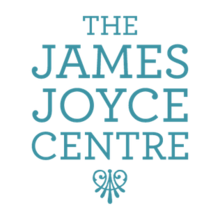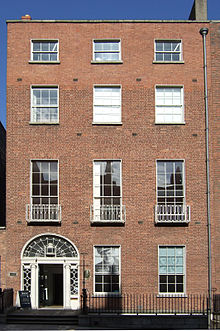
Ulysses is a modernist novel by the Irish writer James Joyce. Partially serialized in the American journal The Little Review from March 1918 to December 1920, the entire work was published in Paris by Sylvia Beach on 2 February 1922, Joyce's fortieth birthday. It is considered one of the most important works of modernist literature and has been called "a demonstration and summation of the entire movement".

Leopold Paula Bloom is the fictional protagonist and hero of James Joyce's 1922 novel Ulysses. His peregrinations and encounters in Dublin on 16 June 1904 mirror, on a more mundane and intimate scale, those of Ulysses/Odysseus in Homer's epic poem: The Odyssey.

Bloomsday is a commemoration and celebration of the life of Irish writer James Joyce, observed annually in Dublin and elsewhere on 16 June, the day his 1922 novel Ulysses takes place on a Thursday in 1904, the date of his first sexual encounter with his wife-to-be, Nora Barnacle, and named after its protagonist Leopold Bloom.

Enniscorthy is the second-largest town in County Wexford, Ireland. The town is located on the picturesque River Slaney and in close proximity to the Blackstairs Mountains and Ireland's longest beach, Curracloe.

Nora Barnacle Joyce was the muse and wife of Irish author James Joyce. Barnacle and Joyce had their first romantic outing in 1904 on a date celebrated worldwide as "Bloomsday" after his modernist novel Ulysses. Barnacle did not, however, enjoy the novel. Their sexually explicit letters have aroused much curiosity, especially as Joyce normally disapproved of coarse language, and they fetch high prices at auction. In 2004, an erotic letter from Joyce to Barnacle sold at Sotheby's for £240,800.

Sandycove is a suburb of Dublin, Ireland. It is southeast of Dún Laoghaire and Glasthule, and northwest of Dalkey. It is a popular seaside resort and is well known for its bathing place, the Forty Foot, which in the past was reserved for men only but is now available for mixed bathing. The locale features in the opening of Ulysses by James Joyce.
Events in the year 1904 in Ireland.

The Dublin Writers Museum was a museum of literary history in Dublin, Ireland. It opened in November 1991, and was hailed as an "iconic" museum in Dublin. It closed during the Covid-19 pandemic, and was brought to an end in 2022 without ever reopening.
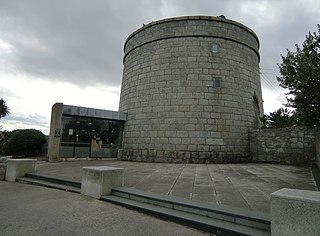
The James Joyce Tower and Museum is a Martello tower in Sandycove, Dublin, where James Joyce spent six nights in 1904. The opening scenes of his 1922 novel Ulysses take place here, and the tower is a place of pilgrimage for Joyce enthusiasts, especially on Bloomsday. Admission is free.

Tourism in the Republic of Ireland is one of the biggest contributors to the economy of Ireland, with 9.0 million people visiting the country in 2017, about 1.8 times Ireland's population. Each year about €5.2bn in revenue is made from economic activities directly related to tourists, accounting for nearly 2% of GNP and employing over 200,000 people. In 2011 alone, Ireland was voted 'Favourite holiday destination in the World' by readers of Frommer's Guide, Lonely Planet listed Ireland as the world's friendliest country and Cork City as one of the top ten cities in the world and the Irish tourist boards website, DiscoverIreland.com, was named the best tourist board website in the world. Most tourists visiting Ireland come from the United Kingdom, the United States, Germany and France.

The Hotel Riu Plaza The Gresham Dublin, formerly The Gresham Hotel, is a historic four-star hotel on O'Connell Street in Dublin, Ireland. It is a Dublin institution and landmark. Founded in 1817, the current structure was completed in 1927 and was completely refurbished in 2024.

Gerald Davis was one of Ireland's leading semi-abstract artists. He was also an art gallery owner, critic, and Joycean scholar. He was a prominent member of the Jewish community in Ireland. He wrote for Irish national newspapers and broadcast on radio and television, where he reported on the arts and Irish Jewish life.
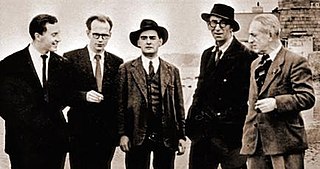
John Ryan (1925–1992) was an Irish artist, broadcaster, publisher, critic, editor, and publican.
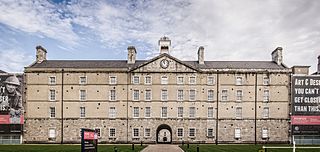
The National Museum of Ireland – Decorative Arts and History is a branch of the National Museum of Ireland (NMI) located at the former Collins Barracks in the Arbour Hill area of Dublin, Ireland.
Stephen James Joyce was the grandson of James Joyce and the executor of Joyce's literary estate.

The Greville Arms Hotel is a hotel located in the centre of Mullingar, County Westmeath, Ireland which is best known for being one of the few surviving Irish hotels known to James Joyce and mentioned by him in his writings.

The Museum of Literature Ireland, branded MoLI in an homage to Molly Bloom, is a literary museum in Dublin, Ireland. It opened in September 2019. The museum is a partnership between the National Library of Ireland and University College Dublin (UCD). It is located in UCD's Newman House in St Stephen's Green. It holds a permanent collection of James Joyce–related material, including his "Copy No. 1" of Ulysses, and revolving exhibitions on other Irish literary figures. With a range of audio and immersive displays, it has been nominated for and won a number of awards for design and architecture.

The Olivier Cornet Gallery is a contemporary commercial art gallery in Dublin, Ireland, owned and run by French-born Olivier Cornet.
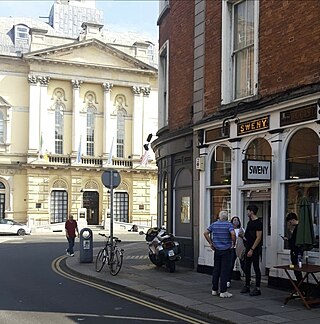
Sweny's Pharmacy, or F. W. Sweny & Co. Ltd. is a former Victorian-era pharmacy, now a new and used book store, a Joycean cultural centre, hosting daily group readings of Joyce’s work and supporting new aspiring writers, in Dublin, Ireland most notable for appearing in James Joyce's 1922 novel Ulysses. The pharmacy is one of many Joycean landmarks scattered throughout Dublin, and has become a literary tourist attraction, particularly on Bloomsday when fans of Joyce visit the premises to celebrate the book.

The Zürich James Joyce Foundation cultivates the memory of the life and work of the Irish writer James Joyce as well as his special relationship with Zurich, where he spent decisive years of his life, died in 1941 and was buried.
